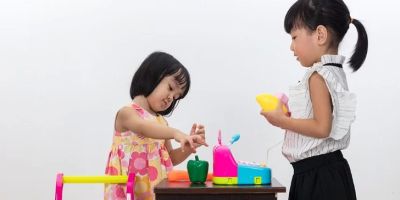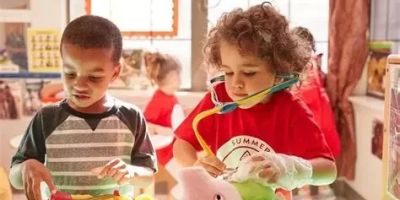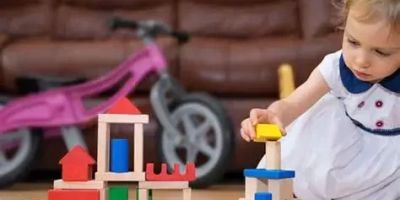Creating a Minimalist Toy Collection That Sparks Joy and Creativity
As a parent, I've always found myself questioning the overflowing toy bins in my children's room. From plastic gadgets to electronic toys that never seem to last, I wondered, "Do they really need all of this?" That’s when I decided to embrace a minimalist toy collection. Not only did it transform our home, but it also transformed how my kids interacted with their toys. Here's a step-by-step guide on how I built a minimalist toy collection that brought simplicity, creativity, and sustainability into our everyday lives.
1. Start with a Clear Vision: What Do You Want from Your Toy Collection?
Before diving in, it's crucial to understand what you want to achieve with your minimalist toy collection. For me, the goal was simple: less clutter, more creativity. I wanted my kids to play more with their imagination rather than being overwhelmed by hundreds of toys that barely get touched. My vision became centered around toys that were timeless, durable, and fostered open-ended play.
Ask yourself these key questions when building your collection:
- Do these toys encourage creativity?
- Are they durable and eco-friendly?
- Will they serve my children as they grow?
2. Assess What You Already Have
The next step is to assess the toys that are already in your home. Take a hard look at what your children play with regularly and what they’ve outgrown. One of the most eye-opening things I discovered was that many of the toys I thought were “must-haves” were actually ignored. Over the course of a weekend, we went through the toy bins together, and I encouraged my kids to make decisions about which toys they truly loved.
We ended up donating a large portion of the toys. It was hard at first, but I noticed that my kids were actually more excited to play when the room wasn’t cluttered. The key is to curate the collection thoughtfully, keeping only the toys that have lasting value.
3. Choose Quality Over Quantity
One of the most significant lessons I learned in building a minimalist toy collection is that quality truly matters. I stopped buying toys simply because they were on sale or trendy. Instead, I started investing in fewer, but higher-quality, toys that would stand the test of time.
For instance, I chose wooden toys, fabric dolls, and building blocks instead of plastic toys. These items are not only eco-friendly but also incredibly versatile. A simple set of wooden blocks can lead to hours of imaginative play, and they can be passed down for generations.
In addition, I chose toys that could grow with my children. A set of wooden blocks, for example, can be used in many different ways as my kids grow older, from basic stacking to intricate engineering projects.
4. Focus on Open-Ended Toys
Open-ended toys are those that don’t have a single purpose. A great example is a set of building blocks, which can be used to create anything from houses to cars to abstract art. These types of toys encourage imagination and creativity, making them perfect for a minimalist collection.
When I selected toys for our minimalist collection, I made sure they would inspire my kids to use their creativity. Things like wooden cars, pretend play sets, and simple art supplies like crayons and paper fit the bill. With open-ended toys, the possibilities are endless, and my children get more out of each toy since they can use them in various ways.
5. Embrace Eco-Friendly and Sustainable Toys
Part of creating a minimalist toy collection for me was focusing on sustainability. I wanted toys that were not only good for my kids but also good for the planet. Many plastic toys end up in landfills, so I turned to brands that prioritize eco-friendly materials like wood, cotton, and organic dyes.
We now own a collection of eco-friendly toys from sustainable brands that ensure their products are safe for the environment. For example, one of my favorite purchases was a set of eco-friendly wooden animals. These beautiful toys are made from natural materials and are incredibly sturdy, ensuring they last for many years.
6. Organize and Maintain Your Minimalist Collection
One challenge that many people face with a minimalist approach is staying organized. It's easy for things to pile up if you don’t have a system in place. I invested in simple storage solutions like wooden bins and open shelves. I made sure that my kids could access and return their toys with ease.
We also maintained a “one-in, one-out” rule. Whenever we acquired a new toy, an old one had to go. This kept our toy collection manageable and ensured that we were always choosing quality over quantity.
7. Foster a Playful Environment
Finally, I realized that having a minimalist toy collection isn’t just about the toys themselves; it’s about creating a space that inspires creativity. I kept the play area clean and clutter-free, allowing my kids to focus on the toys they had. I also made sure there was plenty of space for open-ended play, whether it was drawing on the walls with chalk or creating elaborate worlds with their building blocks.
Our home feels more peaceful now, and my kids are more engaged with their toys. The simplicity of the collection allows for deeper, more meaningful play. Over time, I’ve found that this minimalist approach not only reduced the clutter but also made our family’s environment more intentional and joyful.
8. Tips for Creating Your Own Minimalist Toy Collection
- Focus on timeless toys that encourage imagination.
- Choose high-quality, eco-friendly materials.
- Organize toys to keep them accessible and manageable.
- Teach your children about the value of less, and encourage them to let go of toys they no longer use.
- Regularly reassess the collection to ensure it still serves your needs.





